Bountiful bunyas : a charismatic tree with a fascinating history
By Stacey Larner, Librarian, Queensland Memory | 11 October 2021
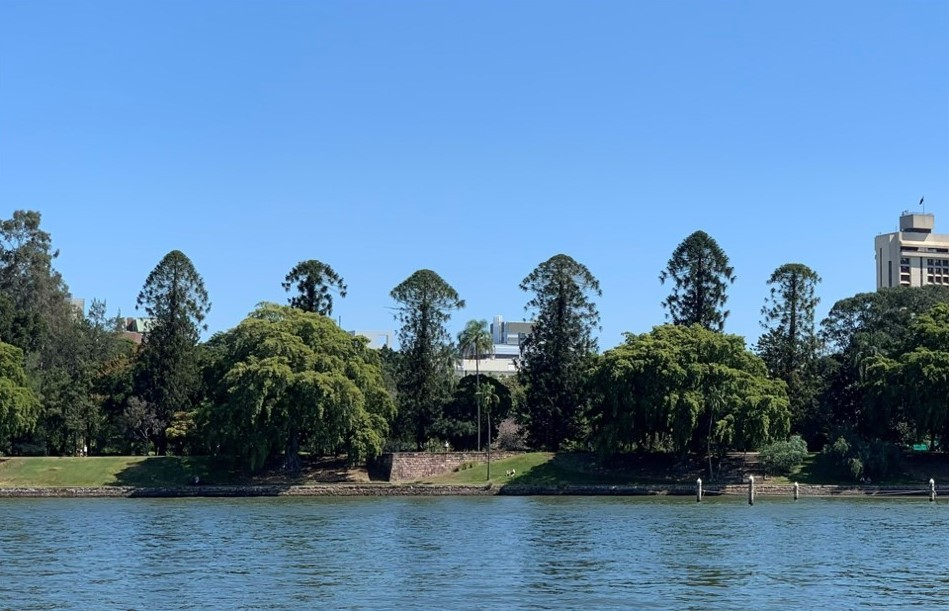
The bunyas along the river in the City Botanic Gardens were planted by Walter Hill between 1858 and 1867. Photograph taken by Stacey Larner.
One of the most iconic of Queensland trees would have to be the bunya (Araucaria bidwillii). Its towering, dome-shaped silhouette can be seen dominating the treeline of the city botanic gardens, Roma Street Parklands, and locations all around south-east Queensland. As a child, growing up, I recognised the distinctive shape of the tree without knowing what it was called or its significance. As an adult, I have come to appreciate the unique history of the bunya, and its enduring relationship with First Nations peoples.
![Araucaria bidwilli [sic] in Flore des serres et des jardins de l'Europe : annales générales d'horticulture.](/sites/default/files/styles/slq_standard/public/18380432120-v021-0084-0059.jpg?itok=b_UHNMxF)
Araucaria bidwilli [sic] in Flore des serres et des jardins de l'Europe : annales générales d'horticulture, Louis van Houtte, 1845-1880, John Oxley Library, State Library of Queensland.
A prehistoric tree, the bunya has existed since the Jurassic period, while many of its relatives from the era are now extinct. The botanical family to which it belongs, Araucariaceae, includes the Wollemi pine. They can live up to 600 years and produce massive cones up to 10kg. When these cones fall they can be extremely hazardous, a fact that has caused consternation for councils for decades.
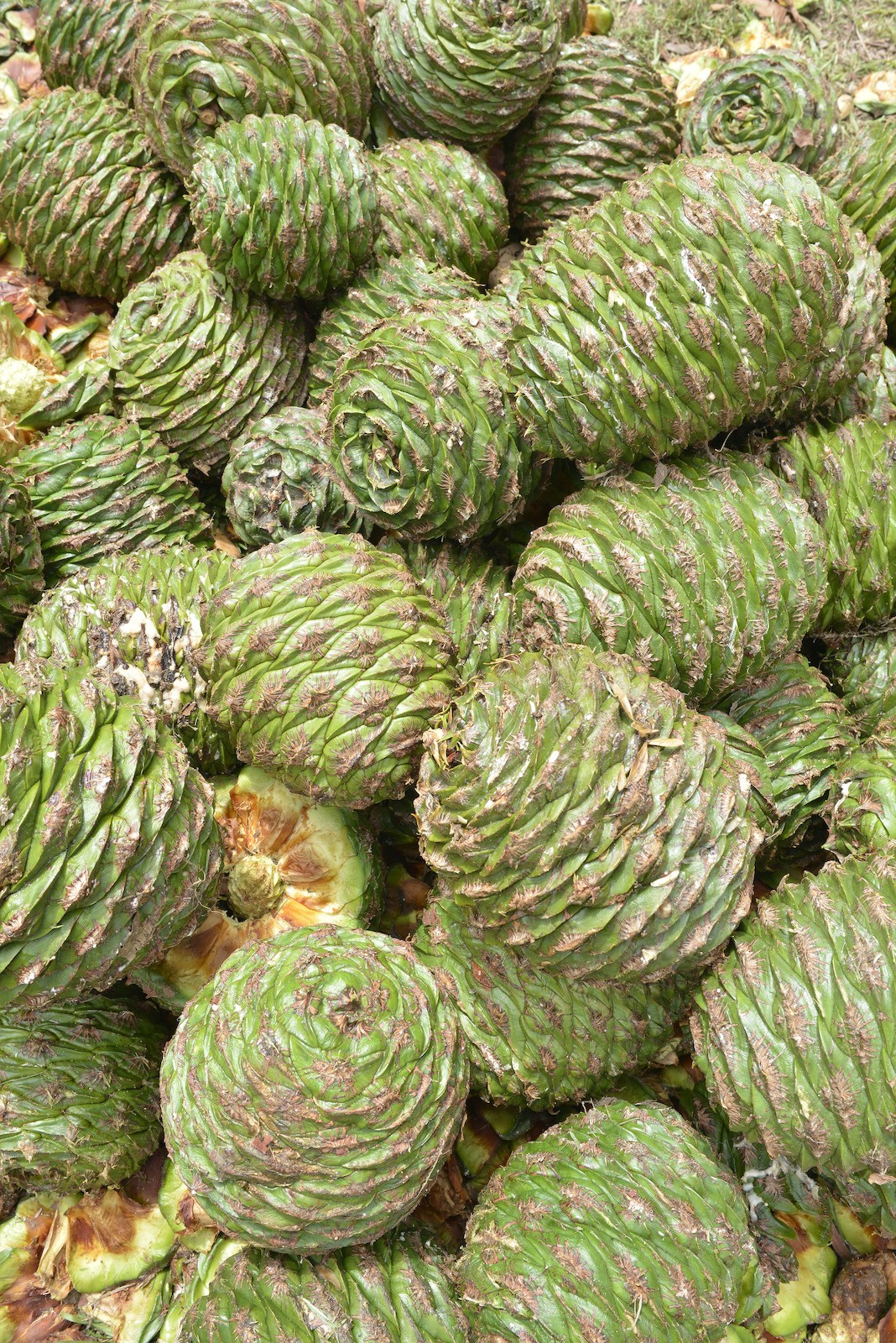
Mound of bunya cones at the Bunya Dreaming Festival, 26 January 2020. Jo-Anne Driessens, Bunya Dreaming Festival photographs, Image number 18374531100-0001-0024, John Oxley Library, State Library of Queensland.
For generations, First Nations peoples gathered every three years for a great bunya feast. While bunyas fruit annually, every three to four years there would be a bumper crop, and this was the time for differences to be set aside and clans to gather, feast, trade, marry, perform initiations and other ceremonial duties. Academic Ray Kerkhove sought to compile a “living image” of the Bunya Gatherings in his book The great bunya gathering : early accounts. He writes:
Despite the Bunya Gathering’s immense importance, not much is known of its format or content, as very few whites had the privilege of attending. This booklet compiles a number of accounts of bunya gatherings, as found in early writings – mostly by whites, though where possible I have included Indigenous accounts also. It is difficult to be exhaustive
Gatherings were generally held in the Blackall Ranges at Baroon Pocket and in the Bunya Mountains. Clans from far away would be invited to one location or the other.
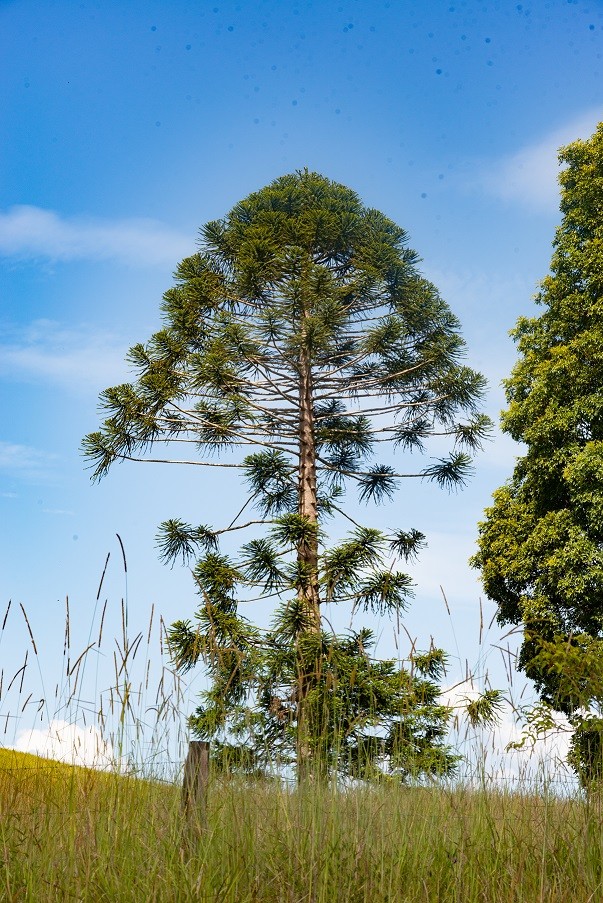
Bunya tree at Stoney Creek, 13 February 2021. Jo-Anne Driessens, 32918, Jo-Anne Driessens photographs of Bunya trees in Queensland, Image number 32918-0001-0007, John Oxley Library, State Library of Queensland.
Recognising the significance of the bunya to the local clans, New South Wales Governor George Gipps sought to restrict logging and preserve the area we now know as the Sunshine Coast for the use of First Nations peoples. In 1842 he issued a notice prohibiting the occupation of this land by European colonists and refusing licences to fell the massive trees. Queensland became an independent state in 1859, and in 1860 the edict was repealed. This led to the forcible removal of First Nations peoples around the Sunshine Coast to make way for rapid colonisation, disrupting connection to Country and resulting in widespread felling of bunyas. The last Bunya Gathering was said to have been held in the late 19th or early 20th century.
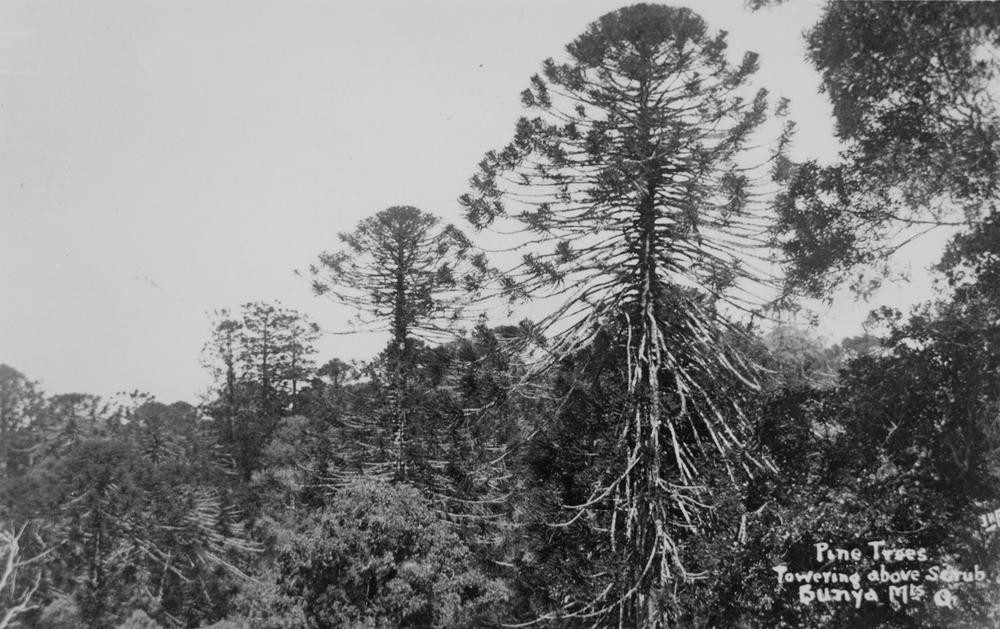
Pine trees towering above scrubs, Bunya Mountains, ca. 1920. Negative number 57614, John Oxley Library, State Library of Queensland.
Tom Petrie's reminiscences of early Queensland, recorded by his daughter Constance Petrie, recount a white man’s version of the historic bunya gathering. Tom grew up amongst the children of the Turrbal people, as there were no other white children for him to play with in the early days of Brisbane. He was a teenager when he attended one of the great gatherings with a large group of Turrbal people and was, according to his daughter, the only free white man to have ever been present at a feast. Constance writes:
Arriving at the Blackall Range, the party made a halt at the first bon-yi tree they came to, and a blackfellow accompanying them, who belonged to the district, climbed up the tree by means of a vine. When a native wishes to climb a tree that has no lower branches he cuts notches or steps in the trunk as he goes up, ascending with the help of a vine held round the stem. But my father's experience has been that the blacks would never by any chance cut a bon-yi, affirming that to do so would injure the tree, and they climbed with the vine alone, the rough surface of the tree helping them.”
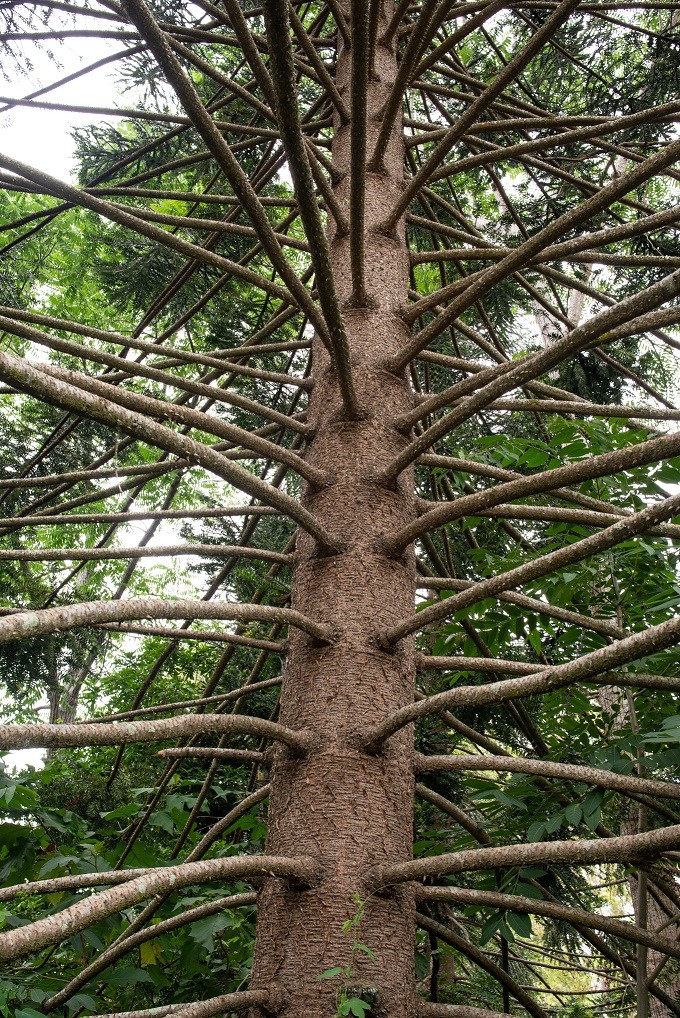
Trunk and branches of a Bunya tree at Woodford, 13 March 2021. Jo-Anne Driessens, 32918, Jo-Anne Driessens photographs of Bunya trees in Queensland, Image number 32918-0001-0009, John Oxley Library, State Library of Queensland.
In 1937 a small bunya tree was planted on the river bank at North Quay to commemorate the coronation of King George VI. Although this act was described as “the simplest and yet probably the most enduring” commemoration of the day the bunya has since disappeared, a quiet victim of progress like so many others.
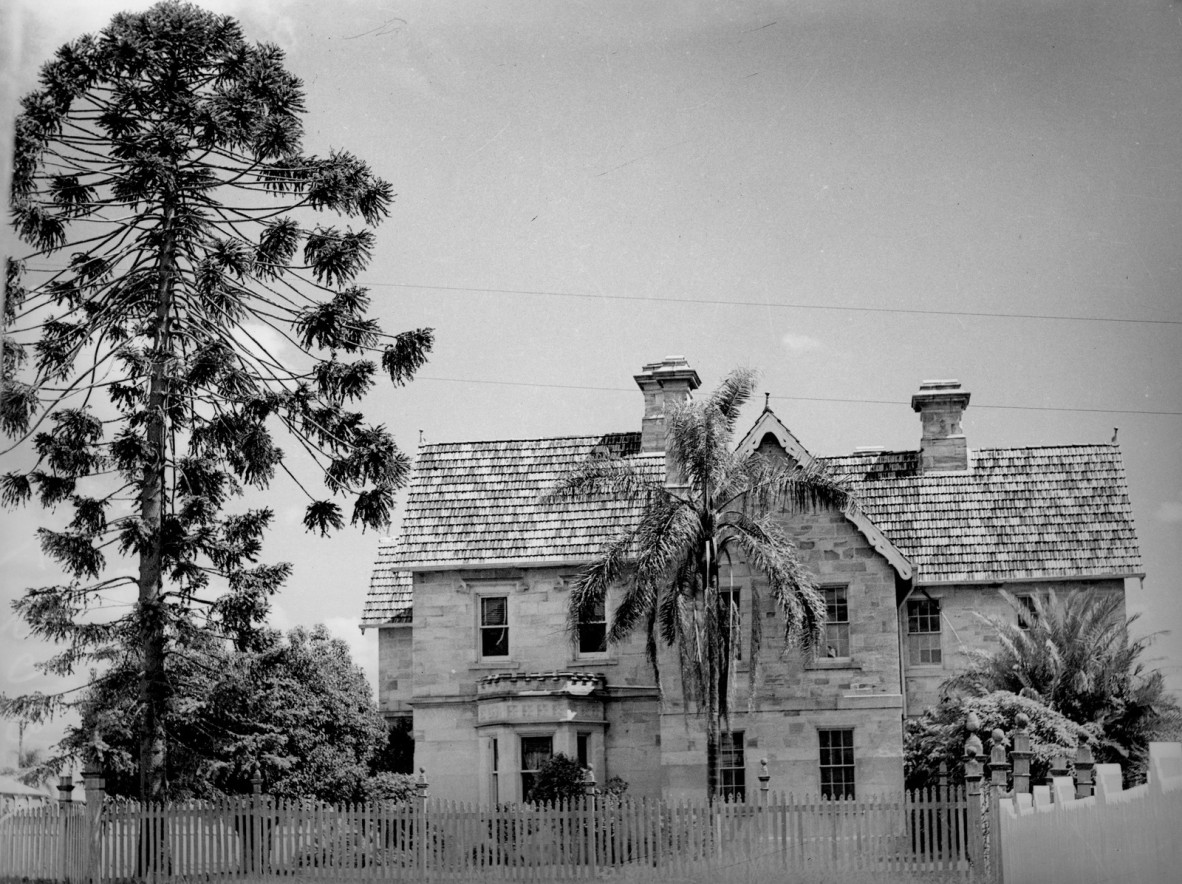
This bunya outside Kalinga Lodge has also since been removed, though the Lodge still stands. Kedron Lodge, Kalinga, ca. 1937. Negative number 69664, John Oxley Library, State Library of Queensland.
While the traditional Bunya Gathering was disrupted by colonisation, First Nations peoples found ways to keep continuity of culture. Stories were passed down, as were the traditional methods of gathering and preparing bunya nuts for eating. In 2007 Kabi Kabi Elder Beverly Hand established the Bunya Dreaming Festival. Its purpose was not to reinvent the old Gatherings, but to reimagine the Festival for the modern audience, with reconciliation an important underpinning principle.
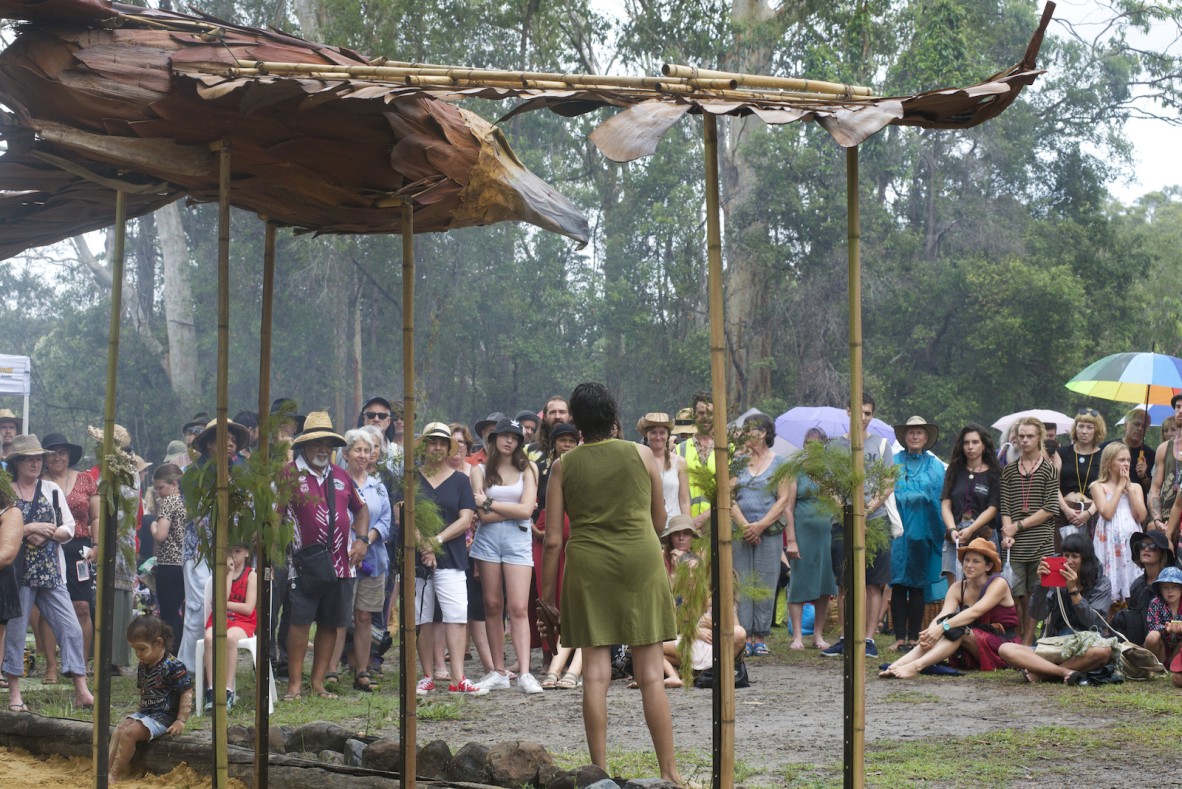
Kabi Kabi Elder and Bunya Dreaming founder Aunty Beverly Hand welcoming the crowd at the Bunya Dreaming Festival, 26 January 2020. Jo-Anne Driessens, Bunya Dreaming Festival photographs, Image number 18374531100-0001-0001, John Oxley Library, State Library of Queensland.
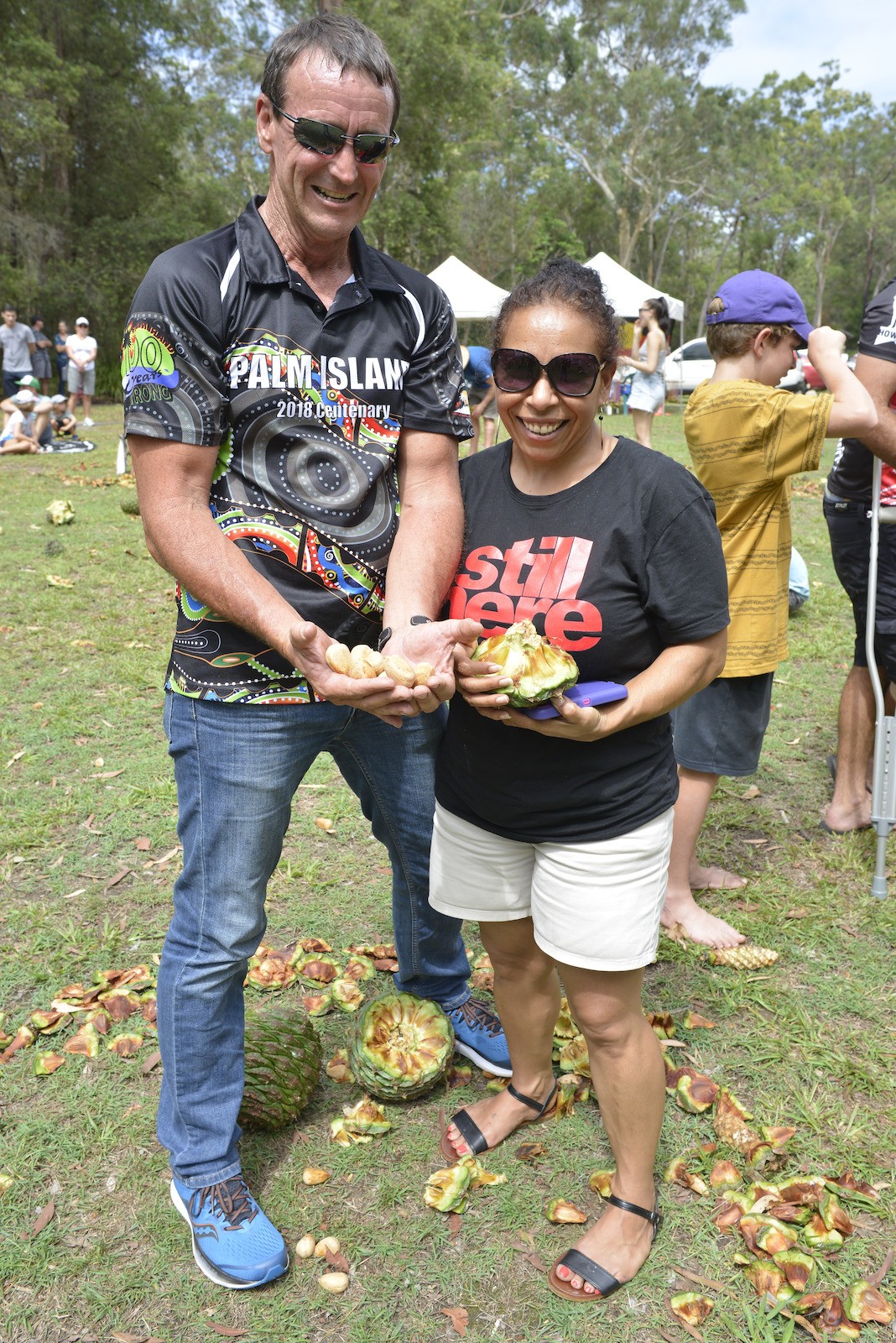
Holding out the bunya nuts after the shucking challenge at the Bunya Dreaming Festival, 26 January 2020. Jo-Anne Driessens, Bunya Dreaming Festival photographs, Image number 18374531100-0001-0029, John Oxley Library, State Library of Queensland.
BJ Murphy, a Jinibara Elder, shared his thoughts on the bunya and the traditional gatherings with Shannon Brett, author of Kindred Spirits: plants and people.
These tall, beautiful trees come from mother earth and are sacred to the Jinibara and surrounding tribes. We would never harm a bunya, let alone cut one down.
...As a proud Jinibara father, I strongly feel my connection with the bunya. Understanding its cultural significance has been passed down and I hope my children will pass it onto their children and keep our connection to this beautiful country strong.” (Kindred Spirits p. 16)
BJ Murphy’s full account can be read in the publication, available to purchase from the Library Book Shop. With text by Shannon Brett, featuring images from State Library’s collection and more, it explores the ancient and ongoing connection between First Nations people and plants in Queensland. This publication was developed in response to the Entwined: plants and people exhibition which is open now and runs until November 14, 2021.
Other blogs relating to Entwined: plants and people
- Xanthorrhoeas - An Australian Explosive
- Queensland's fern fever
- Keeping culture alive through weaving
- Orchidelirium: when love turns to obsession
- Queensland’s coastal kidneys: mangrove
- The grand florilegiums of Joseph Banks and Ferdinand Bauer
- Queensland’s gympie-gympie: the world’s most painful plant
- Grand botanical publications of the 18th and 19th centuries: from scientific discovery to practical horticulture
Commitment statement
This material contains Aboriginal and/or Torres Strait Islander content, and has been made available in accordance with State Library of Queensland’s Aboriginal and Torres Strait Islander Collections Commitments.
Comments
Your email address will not be published.
We welcome relevant, respectful comments.